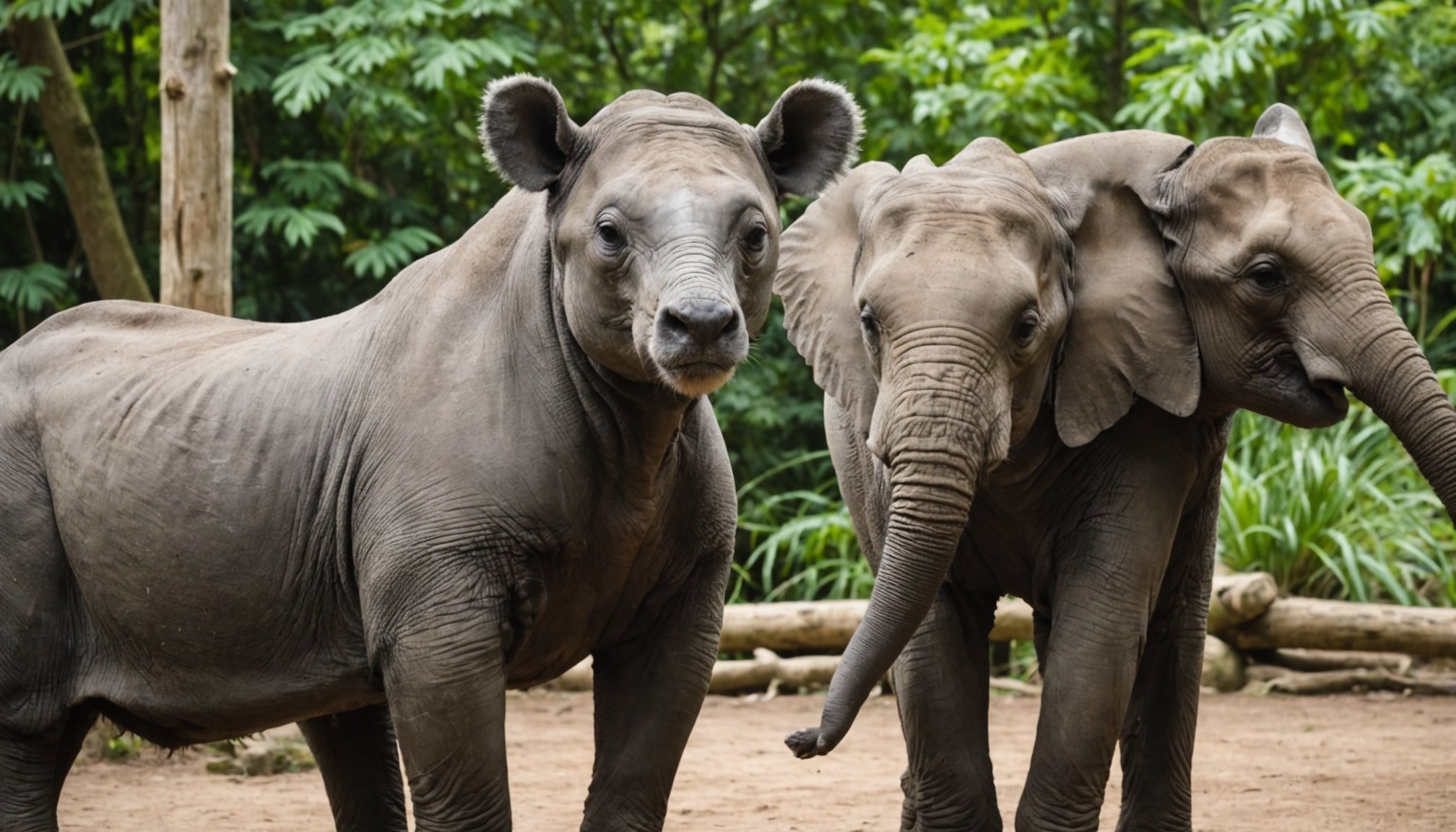How UK Zoos Are Safeguarding Animal Health: Strategies to Combat Disease Spread
UK zoos are at the forefront of animal conservation and welfare, and one of the critical aspects of their mission is to ensure the health and well-being of the animals in their care. With the ever-present threat of diseases, zoos must implement robust strategies to prevent, detect, and manage disease outbreaks. This article delves into the comprehensive measures UK zoos are taking to safeguard animal health and combat the spread of diseases.
Understanding the Risks: Disease Spread in Zoos
Disease spread in zoos is a complex issue that can have severe consequences for animal health and welfare. Here are some key risks and factors that zoos need to consider:
Also to discover : Essential Plants for UK Gardeners: How to Attract and Support Native Butterfly Species
Types of Diseases
- Avian Influenza: A highly contagious viral disease that can affect birds, posing a significant risk to avian species in zoos.
- Foot and Mouth Disease: A viral disease that affects cloven-hoofed animals, which can be devastating if it spreads within a zoo.
- SARS-CoV-2: Although primarily a human disease, there have been instances where animals, especially primates and big cats, have been infected, highlighting the need for stringent biosecurity measures.
Factors Contributing to Disease Spread
- Animal Movement: The transfer of animals between zoos or from the wild can introduce new diseases into a zoo’s premises.
- Human Interaction: Visitors and staff can inadvertently carry diseases into the zoo.
- Environmental Conditions: Poor hygiene, inadequate housing, and insufficient cleansing and disinfection protocols can facilitate disease spread.
Implementing Robust Disease Control Measures
UK zoos are mandated to follow strict guidelines and regulations to ensure animal health and welfare. Here are some of the key strategies they employ:
Licensing and Regulatory Compliance
Zoos in the UK must obtain a licence under the Zoo Licensing Act 1981, which requires them to meet specific standards for animal welfare and health. The licence is granted by local authorities after an inspection to ensure compliance with the Act and associated guidance.
In parallel : Uncovering the Legal Framework: How the UK Tackles Illegal Poaching of Protected Wildlife
Surveillance and Monitoring
- Regular Health Checks: Zoos conduct regular veterinary checks on animals to detect any signs of illness early.
- Disease Reporting: There is a mandatory reporting system for diseases, ensuring that any outbreak is quickly identified and reported to the relevant authorities.
- Risk Assessment: Zoos perform thorough risk assessments to identify potential disease vectors and implement preventive measures.
Biosecurity Protocols
- Cleansing and Disinfection: Strict cleansing and disinfection protocols are in place to maintain a clean environment. This includes regular cleaning of enclosures, equipment, and vehicles.
- Personal Protective Equipment (PPE): Staff are trained to use PPE such as gloves, masks, and protective clothing to minimize the risk of disease transmission.
- Visitor Management: Zoos implement measures to control visitor interaction with animals, such as barriers and hygiene stations.
Providing Optimal Animal Welfare
Animal welfare is intricately linked with health, and UK zoos are committed to providing conditions that promote the well-being of the animals in their care.
The Five Freedoms and Five Domains Model
- Five Freedoms: This model, widely adopted in the UK, ensures that animals have freedom from hunger and thirst, freedom from discomfort, freedom from pain, injury or disease, freedom to express normal behavior, and freedom from fear and distress.
- Five Domains Model: This model, an extension of the Five Freedoms, includes human-animal interactions and assesses animal welfare across five domains: nutrition, environment, health, behavior, and mental state.
Enabling Animal Choice and Natural Behavior
- Providing Mate Choice: Zoos offer animals the opportunity to choose their mates, which is crucial for their reproductive health and welfare.
- Training and Handling: Positive reinforcement training is used to handle animals, reducing stress and promoting a healthy environment.
- Naturalistic Environments: Enclosures are designed to mimic natural habitats, allowing animals to exhibit their natural behaviors and reducing the risk of behavioral problems.
Case Study: Chester Zoo’s Conservation Efforts
Chester Zoo is a prime example of how UK zoos are not only safeguarding animal health but also contributing to broader conservation efforts.
Habitat Creation and Biodiversity
Chester Zoo has recently planted 19,000 new trees as part of a major habitat creation project, transforming a low-biodiversity field into a sanctuary for UK wildlife. This initiative links two smaller woods to form a continuous woodland, improving habitat connectivity and biodiversity.
Supporting In Situ Conservation
- Tree Planting: The new woodland will provide homes for native plants and animals, improve soil health, and enhance carbon storage, contributing to the UK’s efforts to combat climate change.
- Wildlife Corridors: The project is part of a wider wildlife corridor initiative, ensuring that local wildlife can move safely through the landscape.
Public Health and Animal Health Interconnectedness
The health of animals in zoos is closely linked to public health, and measures taken to protect one often benefit the other.
Biosecurity Measures
- Visitor Education: Zoos educate visitors on the importance of biosecurity and provide facilities for hand washing and hygiene.
- Staff Training: Staff are trained in biosecurity protocols to prevent the spread of diseases between animals and from animals to humans.
Collaboration with Health Authorities
Zoos work closely with public health authorities to ensure that any disease outbreak is managed effectively. For example, during the SARS-CoV-2 pandemic, zoos implemented enhanced biosecurity measures to protect both animals and visitors.
Practical Insights and Actionable Advice
For those involved in animal care, whether in zoos or other settings, here are some practical insights and actionable advice:
Regular Cleaning and Disinfection
- Ensure all enclosures, equipment, and vehicles are regularly cleaned and disinfected.
- Use appropriate disinfectants and follow the manufacturer’s instructions.
Training and Awareness
- Train staff and volunteers on biosecurity protocols and the importance of disease surveillance.
- Educate visitors on how to interact safely with animals and maintain hygiene.
Risk Assessment and Planning
- Conduct regular risk assessments to identify potential disease vectors.
- Develop and regularly update disease control plans to ensure preparedness for any outbreak.
UK zoos are at the vanguard of animal health and welfare, employing a range of strategies to combat disease spread and ensure the well-being of the animals in their care. From robust biosecurity protocols to providing optimal welfare conditions, these institutions set a high standard for animal care. As Dr. Simon Dowell, Director of Science and Policy at Chester Zoo, emphasizes, “Woodland cover in Cheshire is significantly lower than the national average. That’s why it’s so important, and so exciting, to have created such a valuable new habitat here at the zoo.”
By combining science, husbandry, and ethics, UK zoos are not only safeguarding animal health but also contributing to broader conservation and public health goals. As we move forward, it is crucial that we continue to prioritize animal welfare and health, ensuring that these magnificent creatures thrive both in captivity and in the wild.
Table: Key Strategies for Disease Control in UK Zoos
| Strategy | Description | Benefits |
|---|---|---|
| Licensing and Regulatory Compliance | Zoos must obtain a licence under the Zoo Licensing Act 1981, ensuring compliance with health and welfare standards. | Ensures zoos meet minimum standards for animal health and welfare. |
| Surveillance and Monitoring | Regular veterinary checks and mandatory disease reporting. | Early detection of diseases, prompt action to prevent outbreaks. |
| Biosecurity Protocols | Cleansing and disinfection, use of PPE, visitor management. | Reduces the risk of disease transmission between animals and from animals to humans. |
| Providing Optimal Animal Welfare | Ensuring the Five Freedoms and Five Domains Model are met. | Promotes overall health and well-being of animals. |
| Public Health Collaboration | Working with public health authorities to manage disease outbreaks. | Ensures effective management of diseases that could affect both animals and humans. |
| Training and Awareness | Training staff and educating visitors on biosecurity and hygiene. | Enhances overall biosecurity and reduces the risk of disease spread. |
| Risk Assessment and Planning | Conducting regular risk assessments and updating disease control plans. | Ensures preparedness for any disease outbreak. |
Detailed Bullet Point List: Biosecurity Measures in UK Zoos
-
Cleansing and Disinfection:
-
Regular cleaning of enclosures, equipment, and vehicles.
-
Use of appropriate disinfectants following manufacturer’s instructions.
-
Daily disinfection of high-touch areas and shared equipment.
-
Personal Protective Equipment (PPE):
-
Use of gloves, masks, and protective clothing by staff.
-
Mandatory PPE for staff handling animals or their products.
-
Regular training on the correct use of PPE.
-
Visitor Management:
-
Barriers to prevent direct contact between visitors and animals.
-
Hygiene stations for visitors to wash their hands.
-
Educational signage and staff guidance on maintaining hygiene.
-
Animal Movement Control:
-
Strict protocols for the transfer of animals between zoos or from the wild.
-
Quarantine periods for new animals before introduction to the main population.
-
Health checks for animals before and after movement.
-
Staff Training and Awareness:
-
Regular training sessions on biosecurity protocols and disease surveillance.
-
Awareness programs for staff on the importance of maintaining hygiene and reporting any signs of illness.
-
Continuous education on new and emerging diseases.
-
Public Health Collaboration:
-
Close working relationships with public health authorities.
-
Sharing of health data and collaborative management of disease outbreaks.
-
Joint training programs for staff on biosecurity and public health.










